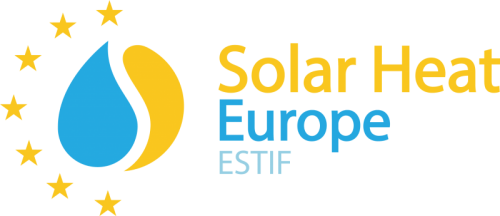On 12th September, the European Parliament adopted the revision of the Renewable Energy Directive (RED3) agreed during Trilogue negotiations concluded last March. The text must now be formally adopted by the Council to conclude the legislative process.
As mentioned, the political agreement on the Directive was reached earlier this year, with the final Trilogue taking place on 29th March. However, the formal adoption was blocked for several months by France, which asked for further guarantees on the role of nuclear energy in producing low-carbon hydrogen.
The revised Directive includes several changes that are relevant to solar heat and renewable heating:
- Article 3 raises the EU binding target for the share of renewable energy in 2030 to 42,5%, a 10-point increase from the current text, coupled with the indicative target to aim for 45%.
- Article 23 introduces a binding target for the share of renewables in the heating and cooling sector: Member States will have to increase the share of renewable in the sector by at least 0.8 percentage points as an annual average calculated for the period 2021 to 2025 and by at least 1.1 percentage points as an annual average calculated for the period 2026 to 2030. While the target is not ambitious in quantitative terms, it is now a binding target, which constitutes a legal obligation for all Member States.
- Article 24 raises the indicative target for the share of renewables and waste heat in district heating and cooling from a 1 percentage point increase to 2.2 percentage points, calculated on average for the period 2021-2030.
- Articles 15a and 22a (new) introduce two new indicative sub-sectoral targets for buildings (49% share of renewables in 2030) and industry (average increase of 1.6 percentage points for the periods 2021-25 and 2026-30).
- Finally, several articles on permitting were added in May 2022 as amendments to the original proposal. Article 15c introduces renewable acceleration areas, to be designated by 27 months after the entry into force, where permit-granting shall be further streamlined and accelerated. Article 16c contains specific provisions regarding permitting for the installation of solar energy equipment (and co-located energy storage assets), which should not exceed three months, provided that the primary aim of such structures is not solar energy production or storage. Furthermore, the permit-granting process for the installation of solar energy equipment with a capacity of 100 kW or less shall not exceed one month, and the absence of a reply by the relevant authorities shall result in the permit being considered as granted.


Leave a Reply